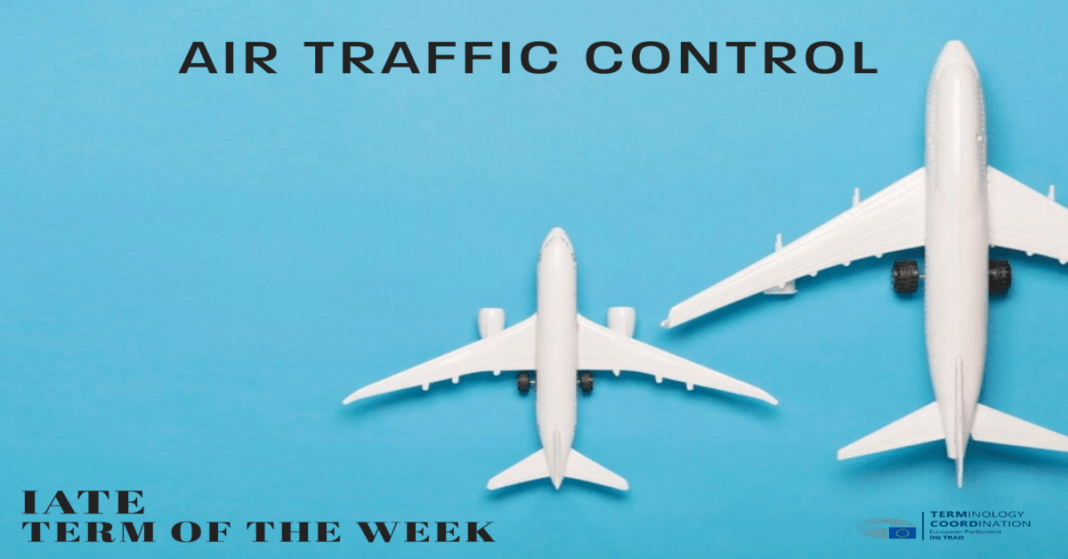Air Traffic Control (ATC) refers to a system of services and facilities that manage the safe and orderly flow of aircraft in the airspace and at airports. Its primary purpose is to prevent collisions between aircraft, ensure efficient aircraft movements, and provide for the safety and regularity of flights.

Air Traffic Control is vital to the aviation industry, as it helps ensure the safety and efficiency of air travel, minimises delays, and contributes to the overall reliability of the aviation system. Under the banner of the Single European Sky (SES) initiative, these efforts have sought to harmonise and modernise Europe’s airspace and air navigation services. ATC services are typically provided by government agencies or authorities and are an essential component of aviation infrastructure worldwide.
Air Traffic Control, via the SES initiative, is closely connected to environmental concerns through various regulations and initiatives aimed at mitigating the environmental impact of aviation.
By reducing airspace congestion, optimising flight routes, and minimising delays, SES helps reduce fuel consumption and emissions from aircraft. This leads to a lower environmental impact, as more efficient flight paths result in reduced fuel burn and lower greenhouse gas emissions.
Another example of that is the Performance-Based Navigation (PBN), which is a navigation concept that allows aircraft to follow precise flight paths, optimizing routes and reducing fuel consumption. The EU has encouraged the implementation of PBN procedures, which are facilitated and coordinated by ATC, to make air travel more environmentally friendly.
In conclusion, EU legislation on air traffic control brings numerous benefits, including improved safety, efficiency, cost savings, and environmental sustainability. These regulations aim to harmonise and modernise the European airspace, enhancing the overall quality of air travel for passengers and stakeholders in the aviation industry.
Bibliography
EASA. (2023). Transition to PNB Operations. Retrieved from Air Traffic Management: https://www.easa.europa.eu/en/domains/air-traffic-management/transition-pbn-operations
European Parliament. (2023). Single European Sky. Retrieved from Mobility and Transport: https://transport.ec.europa.eu/transport-modes/air/single-european-sky_en
European Parliament. (2023, September). Implementation of the Single European Sky (SES) Recast – Report. (n.d.). Retrieved from Legislative Train Schedule: https://www.europarl.europa.eu/legislative-train/carriage/implementation-of-the-single-european-sky-(ses)-recast/report?sid=7301
Written by Marina Scelta
Born in Palermo (Italy), passionate about learning languages since a very young age, she studied Interpreting and Translation for English and French in her hometown, then moved to London for a Master’s Degree in the same domain (University of Westminster), eager to earn some first-hand experience in an international environment. In 2020, she decided to move back to Italy, where she applied for her second Master’s Degree in Foreign Languages for International Communication (Università degli Studi di Torino). In 2021, she had the opportunity to move to Strasbourg as an Erasmus student for almost one year, at the end of which she made of that city her new home. Currently in the process of writing her master’s thesis, in her free time Marina enjoys travelling, singing, walking in the nature, solving crosswords puzzles, and mostly looking around for vegan food.

